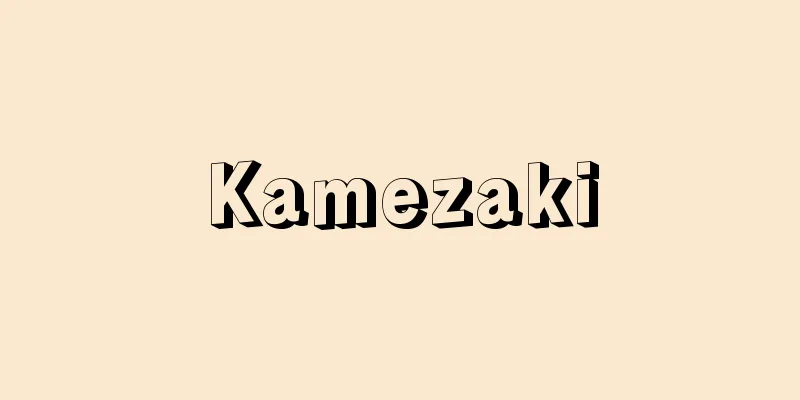Heisuke Kudo

|
Year of death: 12/10/1801 (1/24/1801) Year of birth: 1734 He was a businessman and physician in the mid-Edo period. While serving as a physician for the Sendai domain in Edo, he supported the Shogunate government of Tanuma Okitsugu and provided policy advice based on his knowledge of Dutch studies. His given name was Kyukyou, his pen name was Genrin, his childhood name was Chozaburo, his nickname was Shuan, and after he returned to secular life he was called Heisuke. He was the third son of Nagai Tsuneyasu, a physician for the Kishu (Wakayama) domain, and was adopted at the age of 13 by Kudo Joan, a physician for the Sendai domain. Joan excelled in martial arts and had a vast knowledge, so he imposed strict self-study on Heisuke. During the Horeki period (1751-64), he became acquainted with Yoshio Kogyu, a Dutch interpreter and physician of Dutch medicine in Nagasaki, and during the An'ei period (1772-81), he became acquainted with Sugita Genpaku, Maeno Ryotaku, Nakagawa Junan, Katsuragawa Hoshu, and others from the Edo Dutch Studies Society. He could not read Dutch, but he absorbed their knowledge of Dutch studies, became aware of the situation in the West, and used it as the basis for his policy proposals. The two-volume "Aka Ezo Fusetsuko" (A Study of the Red Ezo Fusetsuko), submitted to the shogunate in 1783, describes the reality of Russia's southward expansion, the history and current state of Russia and Kamchatka, and is a policy argument for guarding the north, opening up trade, and strengthening the nation's power. In 1786, he took notice of the Dutch studies of Otsuki Gentaku, a disciple of Ryotaku, and was influential enough to have him transferred from Ichinoseki Domain to his own domain. A very sociable person, he made a huge profit by brokering the sale of imported goods from the Netherlands to Dutch-loving daimyo and wealthy townspeople, and was on friendly terms with Miura Shoji, a servant of Tanuma Okitsugu, and mediated official matters, bribes, and requests. On the other hand, the work "Mukashi hanashi" written by his eldest daughter Tadano Makatsu portrays his father Heisuke without favoritism and demonstrates the author's intelligence. The testimony, which describes the spirit of the Tanuma period, which shows the change in the center and bearers of early modern culture, in relation to Heisuke's view of the world, his view of life and death, and his food, clothing and shelter, is vivid. Around 1776, when Makatsu was 14 years old, the lord of the domain, Shigemura, arbitrarily ordered him to return to secular life and to leave his hair behind, and he was so active during the An'ei-Tenmei period (1772-1789) that it was rumored that he had been selected as a vassal of the shogunate. However, in reality, he was thought to have given up his medical practice, and he lost patients, his finances became tight, his house burned down, and he was in despair. When he called himself Shuan, he expanded his land, created a landscape with rare cherry blossoms, built a bathhouse on the second floor, and a detached house with a urinal, entertained daimyo, townspeople, and actors, and in Tsukiji, it was said that Honganji and Heisuke spent 20 ryo a year on tofu, and he lived in luxury, spending more than 1,000 ryo a year on living expenses. <References> Shosuke Sato, "Study on the History of Western Studies" (Tetsushi Iwasaki) Source: Asahi Japanese Historical Biography: Asahi Shimbun Publications Inc. About Asahi Japanese Historical Biography |
|
没年:寛政12.12.10(1801.1.24) 生年:享保19(1734) 江戸中期の経世家,医者。江戸詰仙台藩医のまま田沼意次の幕政を支え,蘭学的知見に基づく策論の提供者。諱は球卿,字は元琳,幼名は長三郎,通称は周庵,還俗後に平助。紀州(和歌山)藩医長井常安の3男で,13歳で仙台藩医工藤丈庵の養子となる。丈庵は武術に優れ博覧強記の人ゆえ平助に厳しく自学自習を課した。宝暦期(1751~64)に長崎の阿蘭陀通詞で蘭方医の吉雄耕牛を知り,安永期(1772~81)に江戸蘭学社中の杉田玄白,前野良沢,中川淳庵,桂川甫周らと交際。平助は蘭語を読めず,彼らの蘭学的知見を吸収して西洋事情を認識し,政策献言の根拠とした。天明3(1783)年幕府に提出した『赤蝦夷風説考』上下2巻はロシア南下の実情,ロシア・カムチャツカの歴史と現状を述べ,北方警備,貿易開放,国力増強を説く策論。天明6(1786)年,良沢弟子の大槻玄沢の蘭学に着目し,一関藩から本藩に転籍させるほどの力もあった。人柄は社交性に富み,オランダからの輸入品を蘭癖大名や富裕町人に斡旋して巨利を博し,田沼意次の用人三浦庄司らと親交を持ち,公事沙汰,賄賂,請託を仲介した。他方,父親平助像を身びいきなく描き,筆者の知性を表すのは,長女只野真葛の著『むかしはなし』。近世文化の中心と担い手の変化を示す田沼時代の精神を,平助の世界観,死生観,衣食住に即して記す証言は,精彩を放っている。真葛14歳の安永5(1776)年ごろ,藩主重村の恣意に出た還俗蓄髪の命を契機に,幕臣抜擢と噂されるほどに安永天明期(1772~89)に活躍するが,実情は医師廃業と思われて患者を失い,家計ひっ迫に陥り,居宅も火事に遭い,失意にあったという。周庵を称したころは地所を拡張し,珍種の桜を集めた造園,2階に湯殿,小便所のある離れ屋を設け,大名,町人,役者などを饗応し,年に豆腐代20両を費すのは築地では本願寺と平助といわれ,生活費が年1000両以上という贅沢さであったという。<参考文献>佐藤昌介『洋学史の研究』 (岩崎鐵志) 出典 朝日日本歴史人物事典:(株)朝日新聞出版朝日日本歴史人物事典について 情報 |
<<: Kudoki (persuasion) - Kudoki
Recommend
Turtle ship
A military ship from the Joseon Dynasty of Korea....
Malay [Islands] - Malay
A general term for the islands between the southea...
Khlynov
...Population: 491,200 (1992). Founded in 1181 as...
Amazon
In Greek legend, a race of female warriors (plural...
Bijaganita (English spelling)
At the age of 36, he completed a tetralogy of mat...
Kunu Country
Also called "Kuna no Kuni." One of the p...
Akshapada - Akshapada
...A person who lived around 50-150 AD. Also know...
Sensus communis (English spelling) Sensuscommunis
...One is the meaning of "social commonality...
Reading and pronunciation unification association (English spelling)
A conference convened by the Ministry of Education...
Patellar tendon reflex
…This reflex is called the patellar tendon reflex...
Mattschie's tree-kangaroo
The kangaroo is a member of the mammalian order M...
Aomori Plain - Aomori Heiya
A plain in the center of Aomori Prefecture. It co...
Clyde Kluckhohn
American cultural anthropologist. He conducted lo...
Echeveria setosa - Echeveria setosa
...The leaves are often bluish-white in color, bu...
Kasuga faith
Faith in the deity enshrined at Kasuga Taisha Shr...









